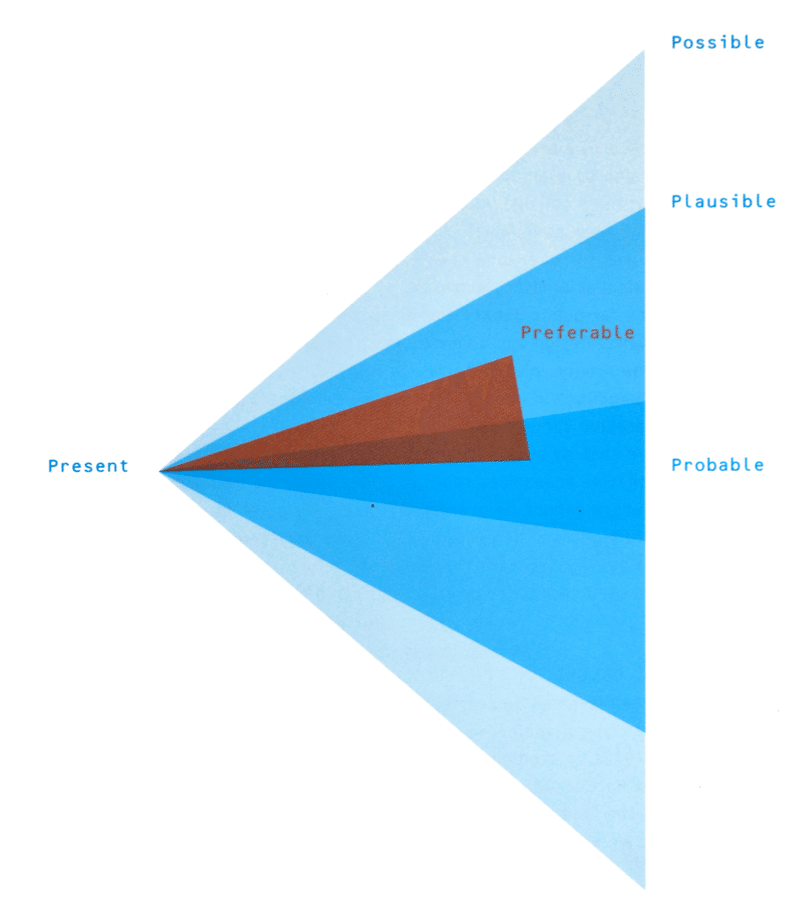
Design and Explore
武蔵野美術大学 大学院造形構想研究科
クリエイティブリーダシップコース クリエイティブリーダシップ特論Ⅰ 第2回
講師:パーソンズ美術大学の岩渕 正樹
講義日:2021年4月19日
次の内容は日英バイリンガルで、7分程度の読書を予定しています。
登壇者のご紹介| The Introduction Of Guest
岩渕 正樹
プロフィール:NY在住のデザイン研究者。東京大学工学部、同大学院学際情報学府修了後、IBMDesignでの社会人経験を経て、2018年より渡米し、2020年5月にパーソンズ美術大学修了(MFA/Design&Technology)。現在はNYを拠点に、Transition Design等の社会規模の文化・ビジョンのデザインに向けた学際的な研究・論文発表(Pivot Conf., 2020)の他、パーソンズ美術大学非常勤講師、Teknikio(ブルックリン)サービスデザイナー、Artrigger(東京)CXO等、研究者・実践者・教育者として日米で最新デザイン理論と実践の橋渡しに従事。近年の受賞にCore77デザインアワード(Speculative Design部門・2020)、KYOTO Design Labデザインリサーチャー・イン・レジデンス(2019)など。
Masaki Iwabuchi
Profile: A design researcher living in New York.After graduating from the Engineering of the University of Tokyo and the Graduate School of Interdisciplinary Information Studies, he moved to the United States in 2018 after working as a member of society at IBM Design, and completed Parsons School of Design (MFA/Design&Technology) in May 2020. Currently based in New York, in addition to interdisciplinary research and thesis presentation (Pivot Conf., 2020) for social-scale cultural and vision design such as Transition Design, Parsons School of Design part-time lecturer, Teknikio (Brooklyn) service Engaged in bridging the latest design theory and practice in Japan and the United States as a researcher, practitioner, and educator such as designer, Artrigger (Tokyo) CXO. Recent awards include the Core77 Design Award (Speculative Design Department, 2020) and KYOTO Design Lab Design Researcher in Residence (2019).
デザインの思考について|About Design Thinking
スペキュラティヴ・デザイン
「現在から見た未来は、暗闇を照らす懐中電灯の明かりのように、円錐状に広がっていると例えられる。明かりは外へ行けば行くほどぼんやりとしているが、手元のよく見える部分だけではなく、未来にはいくつもの可能性があることを示している。(PPPP図)」今使うことを見て、例えば、ロボット、映画ストーリー、小説から、見えないこと想像できます。
いまある技術が進展していったらこんな世界になるだろう、という現在の延長で形作られる未来だけではなく、もっとこんなオルタナティブな社会もありうるのではないかとか、いまある技術が現在と全く違う価値観を拓く可能性はないのだろうかなどと、現在の延長線上ではない、飛躍した未来をデザインにより可視化し、どれが我々の目指すべき未来なのかを議論する領域をスペキュラティヴ・デザインと呼ぶ。

出典:アンソニー・ダン&フィオナ・レイビー『スペキュラティヴ・デザイン』
Speculative Design
"The future seen from the present is likened to a conical spread like the light of a flashlight that illuminates the darkness. The light becomes vague as you go outside, but not only in the part that you can see well at hand. , It shows that there are many possibilities in the future. (PPPP diagram) ”Looking at using it now, for example, you can imagine what you cannot see from robots, movie stories, and novels.
Not only the future shaped by the extension of the present that if the existing technology advances, it will be such a world, but there may be a more alternative society, and the existing technology is completely different from the present. Speculative design is an area where we visualize a leap forward, which is not an extension of the present, by design, and discuss which is the future we should aim for, such as whether there is a possibility of opening up values.
デザイン事例紹介|The Introduction Of Design Case
呼吸する椅子
この作品は私に深い印象を残しました。
1日11時間以上椅子に座り続けていると、身体への悪い影響が考えられます。身体に負担のないようデザインされたハーマンミラーのアーロンチェアや、Apple Watchのエクササイズを促すリマインダーなど、ユーザーをどう快適に過ごさせるか、どう自然な形で運動させるかを考えるのが、ユーザー中心設計の主流のデザインアプローチです。私が試したかったのはそこではなく、「アンチ・ユーザー中心設計」をテーマにした、「オブジェクト中心設計」という考え方です。モノが人をデザインする、という考え方ですね。長く座っていると、徐々に椅子が膨らんできて、立つしかなくなってしまう。人間に判断を任せるのではなく、「生きている椅子」というモノによって人が正しく導かれるという考え方です。
Breathing Chair
If you sit in a chair for more than 11 hours a day, it may have a negative effect on your body. User-centered design is about how to make users feel comfortable and how to exercise in a natural way, such as Herman Miller's Aeron chair designed to be stress-free and reminders that encourage exercise on the Apple Watch. Is the mainstream design approach.
It wasn't there that I wanted to try, but the idea of "object-centered design" with the theme of "anti-user-centered design". The idea is that things design people. If you sit for a long time, the chair will gradually inflate and you will have no choice but to stand. The idea is that people are guided correctly by something called a "living chair," rather than letting humans make decisions.
自分の発想|Impressions
岩渕さんのお話を伺って、私にとって非常に啓発的でした。デザインも自然淘汰の原則に従っているといつも感じていました。市場に出回っているデザインは、実際には「時代遅れ」のものであり、発明されるのを待っているアイテムは、以前の製品を時代遅れにしているように見えます。したがって、どのように市場に参入するかは、すべての設計者が考える必要のある問題です。
この講義で、私はこの質問に対する答えを見つけたようです。デザインは、ユーザーの潜在的なニーズを探求する必要があります(未知の未来の探求)。デザインされた製品は、「これが必要」をユーザーに知らせることができます。同時に、彼は物事の起こり得る状況について推測するためのアイデアも作成しました。想像する可能な未来。これができたらいいなと思います。
It was very enlightening for me after hearing what Mr. Iwabuchi's said.I have always felt that design also follows the principle of natural selection. The designs that have appeared on the market are actually "obsolete" things, and the items waiting to be invented will continue to appear to obsolete previous products. So how to appear on the market is a question that every designer needs to think about.
In this lecture, I seem to have found the answer to this question. The design should explore the potential needs of users (exploration in the unknown future). The products designed can let them know "I need this". At the same time, he also created ideas to speculate about the possible situation of things. To imagine a possible future. I think it would be great if I could do this.
この記事が気に入ったらサポートをしてみませんか?
